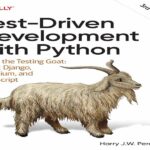- عنوان: Critical Planning and Design
- نویسنده: Camilla Perrone
- حوزه: مدیریت بحران
- سال انتشار: 2022
- تعداد صفحه: 271
- زبان اصلی: انگلیسی
- نوع فایل: pdf
- حجم فایل: 4.94 مگابایت
اگر چیزی وجود دارد که این کتاب روشن میکند، این است که بحث برنامهریزی چند وجهی است و در بسیاری از سنتهای فکری وجود دارد که فراموش نکردن، کشف مجدد در برخی موارد، و تفسیر مجدد در برخی دیگر به عنوان الهامبخش گفتمانهای معاصر مهم است. برنامه ریزی. این کتاب نه هدفی تاریخی-فلسفی دارد و نه قصد دارد دیدگاهی فراگیر در برنامه ریزی و طراحی انتقادی ایجاد کند. این نه یک کتابچه راهنمای و نه ثبت جامعی از مشارکت در رویکرد معاصر به برنامه ریزی انتقادی است، اگر چنین باشد. رنگ و بوی بحث پست مدرن آغاز هزاره را ندارد، بلکه از حساسیت اندیشه پست مدرن نسبت به انواع گوناگونی که اغلب توسط یک فرهنگ مسلط یا عقلانی-جامع محو شده اند، الهام می گیرد. این کتاب از اندیشه پست مدرن و بهویژه از سخنان بهیخو پرخ در بازاندیشی چندفرهنگگرایی (انتشارات دانشگاه هاروارد، 2000) این ایده را به عاریت میگیرد که «فرهنگها روبناهایی نیستند که بر پایههای یکسان و تغییرناپذیر بنا شدهاند، یا تجلی یک جوهر انسانی مشترک نیستند. ، اما آفریده های منحصر به فرد انسانی است که به آن ویژگی هایی که همه انسان ها در آنها مشترک هستند، معانی و جهت گیری های متفاوتی می بخشد» (122). با این منظر، کتاب آموزش مجدد «نگاه» به سمت یک گذشته برنامهریزی چندگانه و متنوع را پیشنهاد میکند – چه توسط تفکر غولها که نیاز به بازگشایی برخی سادهسازیهای تلفیقی دارد و چه توسط نویسندگان جزئی که توسط فرهنگ غالب یک فرهنگ خاص مبهم شدهاند. لحظه ای از تاریخ برنامه ریزی – که ممکن است در تفکر برنامه ریزی و طراحی معاصر قابل استفاده باشد. این نگاه مدیون رویکردهای انتقادی و رادیکال به مطالعات و برنامه ریزی شهری است، اگرچه این سناریو را در پس زمینه نگه می دارد تا فضا را به سفری در کتاب های بنیادی (و تفکر نویسندگان) بدهد که نشان می دهد چگونه نظریه ها، تفسیرها و دیدگاه ها اغلب از سایر رشته ها زمان را پشت سر گذاشته اند و امروزه ایده ها و الهامات تأثیرگذار تفکر برنامه ریزی هستند که رادیکال، انتقادی و جایگزین تفکر جریان اصلی هستند. این کتاب تلاشی سیستماتیک نیست، بلکه تلاشی اکتشافی برای آغاز گفتگو بر اساس گفتمانی آگاهانه در مورد برنامه ریزی و طراحی انتقادی است. این راه را برای تأمل در مورد این که چه چیزی است یا می تواند یک رویکرد برنامه ریزی و طراحی انتقادی با الهام از نظریه انتقادی شهری و توسعه یافته در امتداد تفکر برنامه ریزی تأثیرگذار و رادیکال با هدف پیگیری یک جامعه عادلانه از نظر اجتماعی و زیست محیطی هموار می کند. در این خط، نویسندگان معاصر کتابهای بنیادی و تأثیرگذاری را بازخوانی میکنند که برای هر یک از آنها – نوشته شده در دو قرن گذشته – که کم و بیش به طور ضمنی به ترسیم زمینهای از برنامهریزی انتقادی در گفتوگو با گذشته قابل استفاده کمک کرده است، بازخوانی میکنند. ایده های مولد و مخالف این سفر از طریق برخی ریشهها، مسیرها و چارچوبهای برنامهریزی و طراحی انتقادی نه خطی و نه جامع است و شامل بسیاری از محققان غیربرنامهریز است که مشارکت آنها برای توسعه دیدگاه انتقادی در برنامهریزی و طراحی بسیار مهم است. این مسیری با توقف هایی است که از اندیشه نویسندگان معاصر (نویسندگان این کتاب) الهام گرفته شده است که توشه علمی-انتقادی خود را بر دوش متفکران تأثیرگذار ساخته و ارتقا داده اند و این سهم تأثیرگذار را «گذشته قابل استفاده» خودشان ساخته اند. این گذشته تا آنجا مفید است که به محققان اجازه میدهد تا در مورد شرایط گذشته که تجربه و نظریههای برنامهریزی را شکل داده است، تأمل کنند و پتانسیل تغییری را که در جامعه وجود دارد و به رویکرد انتقادی غنیتری نیاز دارد، درک کنند. میتوان گفت که این کتاب کتابی است درباره کتابهای دیگر محققان که خواننده را به سفری (یکی از بسیاری از ممکنها) در جهان چندوجهی مطالعات انتقادی شهری میبرد. این کتاب تئوری انتقادی شهری را وام گرفته و در پسزمینه نگه میدارد تا خوانندگان را به طور انتقادی درگیر تأملاتی در مورد دیالکتیک تغییرات اجتماعی، تاریخی و رادیکال کند – و عوامل آن که میتوانند احتمالات سرکوبشده در شرایط کنونی اجتماعی-سیاسی و شهری را درک کنند. از این نظر، کتاب دیدگاهی چندوجهی و چندوجهی را درگیر میکند تا به تأمل در دیدگاههای برنامهریزی قابل استفاده معاصر کمک کند که هدف آن تغییر وضعیت موجود به نفع دگرگونیهای اجتماعی-مکانی و محیطی دوستداشتنیتر و کمتر نابرابر، و فرآیندهای شهرنشینی است.
If there is something that this book makes clear, is that the planning debate is multifaceted and has its in many traditions of thought that it is important not to forget, to rediscover in some cases, to reinterpret in others as inspirational of the contemporary discourses on planning. The book does not have a historical-philological intent, nor does it intend to build an overarching perspective on critical planning and design. It is neither a manual nor an exhaustive register of contributions on the contemporary approach to critical planning, if there is one. It does not wear the flavour of the postmodern debate of the beginning of the millennium but draws inspiration from the sensitivity of postmodern thought towards all forms of diversity often obliterated by a dominant or rational-comprehensive culture. From postmodern thought and, in particular, from the words of Bhikhu Parekh in Rethinking Multiculturalism (Harvard University Press, 2000), the book borrows the idea that “cultures are not superstructures built upon identical and unchanging foundations, or manifestation of a common human essence, but unique human creations that reconstitute and give different meaning and orientation to those properties that all human beings share in common” (122). With this perspective, the book suggests a re-education of the “gaze” towards a multiple and diverse planning past—be it represented by giants’ thought that needs unpacking of certain consolidated simplifications or by minor authors obscured by the dominant culture of a specific moment of planning history—whichmight become usable in the contemporary planning and design thought. This gaze owes critical and radical approaches to urban studies and planning, although it keeps this scenario in the background to give space to a journey through foundational books (and the authors’ thinking) that shows how theories, interpretations, and perspectives often from other disciplines have crossed time and are today influential ideas and inspirations of planning thought, which is radical, critical, alternative to a mainstream thinking. The book is not a systematic but exploratory attempt to initiate a conversation based on an informed discourse on critical planning and design. It paves the way for reflecting about what is or can be a critical planning and design approach inspired by critical urban theory and developed along influential and radical planning thinking aimed at pursuing a socially and environmentally just society. In this line, contemporary authors re-read fundamental and influential books that count for each of them—written over the last two centuries—that contributed more or less implicitly to outlining a field of critical planning in dialogue with a usable past from which to draw generative and dissenting ideas. This journey through some roots, pathways, and frames of critical planning and design is neither linear nor exhaustive and includes many non-planner scholarswhose contribution proved to be crucial for the development of a critical perspective on planning and design. It is a trajectory with some stops inspired by the thought of contemporary authors (the authors of this book) who have built and advanced their scientific-critical baggage on influential thinkers’ shoulders making this influential contribution their own “usable past”. This past is useful insofar as it allows scholars to reflect on the past conditions that shaped planning experience and theories, and to grasp the potential for change that lays within the society and needs an enriched critical approach. We can say that this book is a book about the books of other scholars that takes the reader on a journey (one of many possible) through a multifaced universe of critical urban studies. The book borrows and keeps critical urban theory in the background to critically engage the readers in reflections on the dialectics of social, historical, and radical change—and its agents that could realize the possibilities suppressed under current socio-political and urban conditions. In this sense, the book engages a plural and multifaceted perspective to contribute to the reflection on contemporary usable planning perspectives that aims at changing the status quo in favour of amore just and less unequal socio-spatial and environmental transformation, and urbanization processes.
این کتاب را میتوانید بصورت رایگان از لینک زیر دانلود نمایید.
Download: Critical Planning and Design





































نظرات کاربران